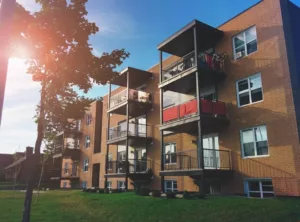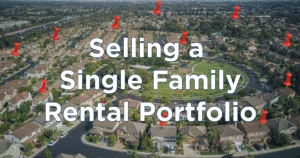Rooftop decks and built-in coffee shops. Who doesn’t love an urban setting where you can live, work, and play?
We have a client who owns a 3-story, mixed-use building in a small town. Great rooftop deck for people-and-sunset watching. Built-in cafe for endless coffee and bagels, on demand. When you work from home, having amenities this close to your apartment is a major benefit to a tenant.
Tenants will pay even more for rent because of amenities like this. Yup, that is certainly a benefit to the owner.
But when you are the owner, how do you value the income stream on different tenant types? Evaluating the appropriate CAP rate on mixed-use developments and planning for long-term success is our focus today.
Evaluating Commercial Tenants
Mixed-use real estate developments offer a unique blend of residential, commercial, and sometimes industrial spaces within a single property. One of the critical aspects of managing such developments effectively is evaluating commercial tenants. Commercial tenants can significantly impact the overall success and profitability of a mixed-use development.
When placing commercial tenants, it’s important to keep in mind that the placement of a CAP rate on that income is a reflection of their risk profile. A higher CAP rate indicated a potentially higher return on investment, but may be riskier, while a lower cap rate suggests lower risk – but lower returns.
Different CAP Rates for Different Tenants
In a mixed-use development, different commercial tenants may warrant different CAP rates based on various factors.
- Tenant Creditworthiness: Tenants with strong credit profiles and established businesses may command lower CAP rates due to lower perceived risk. Conversely, tenants with weaker credit or less-established businesses may require higher CAP rates to compensate for the increased risk.
- Lease Terms: The terms of the lease agreement can influence the CAP rate. Longer lease durations, stable rent escalations, and favorable lease conditions may justify a lower CAP rate, reflecting a higher value for the income stream generated by the tenant. If your commercial lease does not have built-in rent escalations each year, that will hurt your future value, as the tenant’s rent is fixed for years while inflation certainly is not. It is standard that commercial leases should have an escalation of 3-5% per year built in.
- Market Trends: Stay informed about market trends and dynamics affecting the commercial real estate sector. Understand the demand-supply dynamics in the local market, rental trends, and economic indicators. If your tenant is a jewelry store, and this industry is trending more online, think carefully about their long-term viability. Even if they have a long-term lease, sometimes stores will “go dark” and still pay rent even though they’ve closed up shop. This is not good for your overall mixed-use project, or creating the desirable tenant experience.
- Tenant Mix Strategy: The overall tenant mix strategy for mixed-use developments can also impact CAP rates. A strategic mix of anchor tenants, niche businesses, and complementary services may justify different CAP rates for each tenant based on their contribution to the property’s overall performance and attractiveness. This is where the magic sauce of higher rents come into place, when done well!
Putting It All Together:
Many multifamily investors take the overall CAP rate for the community as a whole within mixed-use properties and apply the same metric. That is certainly easier math. However, to truly balance the risk associated with it, the commercial income should be separated out by tenant and the applicable CAP rate applied.
* The biggest mistake we often see multifamily investors make is having a downtown mixed-use building with a ground floor commercial tenant, where they put “proforma” commercial rents into the overall NOI. Sometimes these spaces will rent for LESS than the comparable apartments, and can sit vacant for years if they lack the proper visibility or parking, which are essential for commercial uses. If you see a commercial space sitting vacant – ask WHY and consider carefully before including the income in your underwriting.
There are times when the commercial space is highly desirable and, if so, it may be safe to include the income with appropriate (longer) vacancy.
Conclusion
CAP rates on commercial tenants vary widely based on the dynamics we discusses, so make sure you have informed fundamentals for your underwriting on mixed-use communities.
Need help determining appropriate commercial rates? We’re happy to provide experienced advise – and make sure you invite us to visit your rooftop deck!






